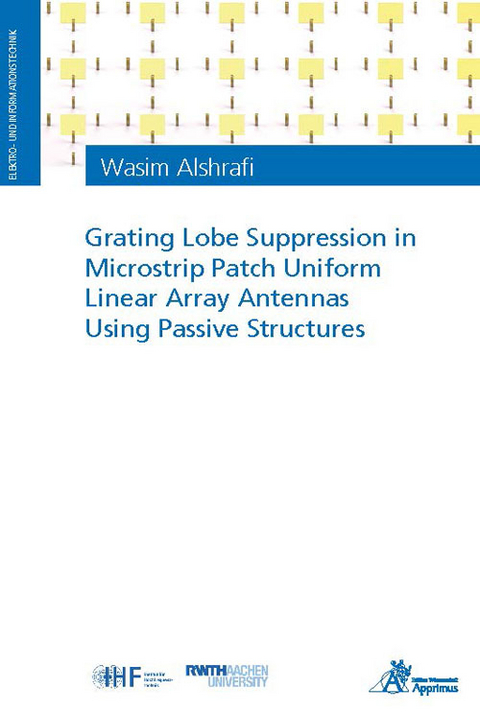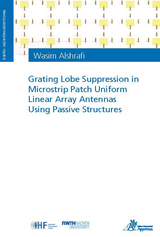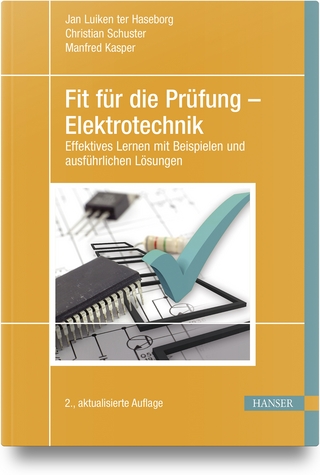Grating Lobe Suppression in Microstrip Patch Uniform Linear Array Antennas Using Passive Structures
Seiten
2022
Apprimus Verlag
978-3-98555-110-1 (ISBN)
Apprimus Verlag
978-3-98555-110-1 (ISBN)
One of the critical enablers of the ever-growing wireless communication and radar technologies revolution is the low-cost, high-gain antenna, specifically, the uniform linear array (ULA) antenna. However, the ULAs have a critical issue called grating lobe that limits array designs. This dissertation thoroughly discusses this issue, presenting different methods to push the antenna array design beyond the conventional limits, especially in the microstrip patch ULAs, using passive structures.
One of the critical enablers of the ever-growing wireless communication and radar technologies revolution is the low-cost, high-gain antenna, specifically, the uniform linear array (ULA) antenna. However, the ULAs have a critical issue called grating lobe that limits array designs. This dissertation thoroughly discusses this issue, presenting different methods to push the antenna array design beyond the conventional limits, especially in the microstrip patch ULAs.The first proposed solution is based on suppressing the wave propagating toward the grating lobe direction along the array aperture using a high impedance structure (HIS), specifically the Fakir's bed of nails (BON). The BON exhibits different operational modes; two of them (bandgap and leaky mode) that show a significant grating lobe suppression by order of 10 dB over different angles as verified by simulation and measurement results.The second proposed solution utilises parasitic monopoles to cancel out the radiation of the unit cell toward the grating lobe direction. The composite structure of the patch and parasitic monopoles can be quickly and precisely designed to achieve the desired performance using the presented theoretical analysis. The results show grating lobe suppression by the order of 10 dB in the E-plane microstrip patch ULA antenna as verified by calculated, full-wave simulated and measured results enabling a dual-band ULA design with a high-frequency ratio.Furthermore, the parasitic monopoles method is extended to mitigate the grating lobe issue in the series-fed patch periodic leaky-wave antenna (SFP P-LWA). This antenna has a structural similarity with the ULA antenna and suffers from the grating lobe issue described above. The proposed method is implemented for the SFP P-LWA with two different techniques, based on whether the even or odd mode of the unit cell is utilised to extend the antenna's operational bandwidth and the beam scanning range.The simple methodology presented in this work is a key-enabler step in the growing demands of low-cost, high-performance antenna arrays leading to a powerful control of the antenna's radiation pattern by just adding a few screws (as a BON structure or parasitic monopoles) scientifically to the antenna array designs.
One of the critical enablers of the ever-growing wireless communication and radar technologies revolution is the low-cost, high-gain antenna, specifically, the uniform linear array (ULA) antenna. However, the ULAs have a critical issue called grating lobe that limits array designs. This dissertation thoroughly discusses this issue, presenting different methods to push the antenna array design beyond the conventional limits, especially in the microstrip patch ULAs.The first proposed solution is based on suppressing the wave propagating toward the grating lobe direction along the array aperture using a high impedance structure (HIS), specifically the Fakir's bed of nails (BON). The BON exhibits different operational modes; two of them (bandgap and leaky mode) that show a significant grating lobe suppression by order of 10 dB over different angles as verified by simulation and measurement results.The second proposed solution utilises parasitic monopoles to cancel out the radiation of the unit cell toward the grating lobe direction. The composite structure of the patch and parasitic monopoles can be quickly and precisely designed to achieve the desired performance using the presented theoretical analysis. The results show grating lobe suppression by the order of 10 dB in the E-plane microstrip patch ULA antenna as verified by calculated, full-wave simulated and measured results enabling a dual-band ULA design with a high-frequency ratio.Furthermore, the parasitic monopoles method is extended to mitigate the grating lobe issue in the series-fed patch periodic leaky-wave antenna (SFP P-LWA). This antenna has a structural similarity with the ULA antenna and suffers from the grating lobe issue described above. The proposed method is implemented for the SFP P-LWA with two different techniques, based on whether the even or odd mode of the unit cell is utilised to extend the antenna's operational bandwidth and the beam scanning range.The simple methodology presented in this work is a key-enabler step in the growing demands of low-cost, high-performance antenna arrays leading to a powerful control of the antenna's radiation pattern by just adding a few screws (as a BON structure or parasitic monopoles) scientifically to the antenna array designs.
| Erscheinungsdatum | 21.09.2022 |
|---|---|
| Reihe/Serie | Elektro- und Informationstechnik |
| Verlagsort | Aachen |
| Sprache | englisch |
| Maße | 148 x 210 mm |
| Gewicht | 259 g |
| Themenwelt | Technik ► Elektrotechnik / Energietechnik |
| Schlagworte | Elektrotechnik • Informationstechnik • uniform linear array antenna |
| ISBN-10 | 3-98555-110-3 / 3985551103 |
| ISBN-13 | 978-3-98555-110-1 / 9783985551101 |
| Zustand | Neuware |
| Haben Sie eine Frage zum Produkt? |
Mehr entdecken
aus dem Bereich
aus dem Bereich




